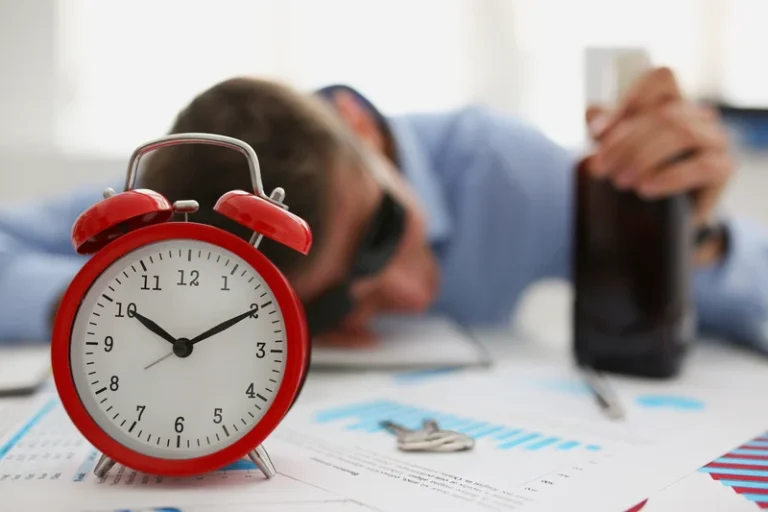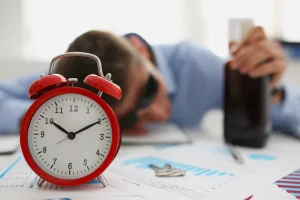
The stages of alcohol detox are early withdrawal, peak withdrawal, and late withdrawal. Each stage presents different withdrawal symptoms and requires specific medical interventions to manage alcohol cravings, psychological symptoms, and physical distress. Detoxification clears the body of harmful substances and is typically one of the first steps in addiction treatment. During the process, the mind and body go through several changes while adjusting to the lack of substance use. This can result in withdrawal symptoms such as headaches, nausea, feeling restless or agitated and intense cravings, while putting people at risk of seizures or heart failure. Long-term recovery and relapse prevention require continued aftercare programs, behavioral therapy, and peer support for at least five years to achieve stable sobriety.
Refilling medications

It can range from mild to severe, depending on how many symptoms you have. Holistic approaches complement traditional alcohol recovery methods by addressing physical, emotional, and psychological well-being. Techniques such as mindfulness, meditation, and exercise promote stress reduction, emotional stability, and improved self-awareness, which are essential for sustaining long-term sobriety.

What Are The Benefits Of Alcohol Recovery?
Between 24 to 72 hours after the last drink, withdrawal symptoms reach their peak, making this the most dangerous phase of detox. The nervous system remains in a state of extreme dysregulation, increasing the risk of Delirium Tremens (DTs), seizures, and cardiovascular distress. Individuals require medical supervision to prevent life-threatening complications. These symptoms develop as the body flushes alcohol and Alcohol Detox the nervous system struggles to regulate neurotransmitters.
More on Substance Abuse and Addiction
- However, there is always hope and the potential for a healthier well-being and a more enriching life.
- Both programs offer ongoing support and encouragement, reducing feelings of isolation and increasing the likelihood of sustained recovery.
- Some people try to detox at home without professional help, but this can increase the risk of dangerous withdrawal symptoms.
- Participants work through structured steps to achieve and sustain sobriety, often with the guidance of a sponsor who has successfully maintained abstinence.
- Alcohol detox is important because it improves safety, prevents life-threatening withdrawal symptoms, and prepares individuals for long-term recovery.
- If you suspect you may have symptoms of a liver problem, or if you have trouble with alcohol use, consider seeing a doctor right away.
- The medications used will depend on each person’s unique circumstances, and a doctor must be consulted before taking anymedications for alcohol withdrawal.
Unlike other medications, disulfiram works by producing severe reactions if alcohol is consumed. For instance, if you drink while on disulfiram, you will experience unwanted effects like facial flushing, nausea, headache, weakness and low blood pressure. The negative effects are meant to deter you from continuing your drinking pattern. Disulfiram is not meant to reduce your alcohol cravings or restore brain functions like some other medications.
- Detox also ensures the gradual stabilization of intoxication levels to prevent cardiac and neurological complications.
- Proper nutrition plays a crucial role in supporting the body’s detoxification processes and repairing organ function.
- We exist to serve those who are seeking addiction treatment in Middle Tennessee, and we have a Cumberland Heights program near you!
- Due to the severity of some withdrawal symptoms, alcohol detox should be monitored by a medical professional.
- A model for reduced use as an endpoint exists with treatments for alcohol use disorder.
- For most people, alcohol withdrawal symptoms will begin to subside after 72 hours.
Don’t wait— reach out today to take the first step toward taking control of your life. When alcohol use stops, the GABA receptors are still less sensitive but are no longer constantly overstimulated by the presence of alcohol. These receptors take several days to regain normal sensitivity and function, and withdrawal symptoms will occur throughout this period.
In addition to the sober individuals, many people among the remaining two-thirds are also drinking less and experiencing fewer alcohol-related health problems after Alcoholics Anonymous one year. Contact your state’s mental health/substance use agency for more guidance on how to afford rehab. This may involve one one-on-one sessions with a social worker or therapist to help you deal with mental health issues or past traumas. At some point, it may be helpful to include your partner or family, too. Your doctor may decide to order different tests, such as blood work or a heart test. These results can help them learn how alcohol has affected your body and identify any infections, injuries, or other health issues that need treatment.
The First Few Hours (0-24 Hours)
- As such, the term “detoxification” may be somewhat of a misnomer since the process need not refer exclusively to the removal of toxic substances from the body.
- Online support groups have become increasingly popular, offering accessibility and anonymity.
- We’re a nonprofit organization, a resource of leading clinical expertise, and the first Tennessee addiction treatment center to achieve certification from the American Society of Addiction Medicine.
- Short-term sobriety focuses on abstinence from alcohol, while long-term recovery encompasses physical, mental, and emotional stability.
- Detox centers provide necessary medications and ensure their medical staff members have expertise in handling medical complications.
People who are dependent on alcohol will experience withdrawal symptoms during detox, which can make the process an uncomfortable and even dangerous experience. According to a study by the National Institute on Alcohol Abuse and Alcoholism (NIAAA) titled “Alcohol Withdrawal Management,” 2023, alcohol detox reduces withdrawal-related complications by 65% when conducted under medical supervision. Most people with mild to moderate alcohol withdrawal don’t need treatment in a hospital. But severe or complicated alcohol withdrawal can result in lengthy hospital stays and even time in the intensive care unit (ICU). The main ways to prevent alcohol withdrawal are to avoid alcohol altogether or to get professional help as soon as possible if you think you’re developing alcohol use disorder.
Medical Alcohol Detox
The most important step you can take is to develop an effective relapse prevention plan, such as attending support groups and individual therapy sessions. You should also recognize your progress and celebrate important milestones. Maintaining motivation doesn’t mean ignoring your achievements this far.


AUD is the most common substance use disorder in the U.S., affecting 28.8 million adults. You can still pursue therapy and support groups as you go through withdrawal. Most people stop having withdrawal symptoms four to five days after their last drink. Your doctor will want to know if you have any mild itching, numbness, a pins-and-needles feeling, or burning.
Alcohol and Cialis: Risks, Side Effects & Treatment
But treatment varies based on the severity of alcohol withdrawal and the likelihood that it could progress to severe or complicated withdrawal. Symptoms of alcohol withdrawal tend to peak 24 to 72 hours after your last drink. It affects about 50% of people with alcohol use disorder who stop or significantly decrease their alcohol intake.
Leave a Reply